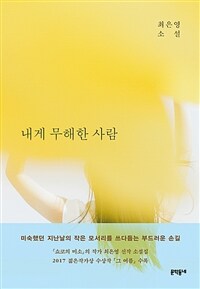The Greening of the Revolution: Cuba's Experiment with Organic Agriculture: Peter Rosset, Medea Benjamin: 9781875284801: Amazon.com: Books

 See this image
See this imageThe Greening of the Revolution: Cuba's Experiment with Organic AgriculturePaperback – July 1, 2002
by Peter Rosset (Editor), Medea Benjamin (Editor)
3.0 out of 5 stars 3 customer reviews
The first detailed account of Cuba's turn to a system of organic agriculture prepared on an international scientific delegation and fact-finding mission on low-input sustainable agriculture which visited Cuba in late 1992.
Product details
Paperback: 85 pages
Publisher: Ocean Press (July 1, 2002)
Language: English
------------------
3 customer reviews
3.0 out of 5 stars
3.0 out of 5 stars
5 star 67%
4 star4 star (0%)
0%
3 star3 star (0%)
0%
2 star2 star (0%)
0%
1 star 33%

dd
5.0 out of 5 starsshould be required textApril 17, 2001
Format: PaperbackVerified Purchase
for any environmental studies program. Ideas put to the test on an island with very little outside resources. Excellent discussion material. Unique insight into the revolution.
6 people found this helpful
5.0 out of 5 starsFirst-rate scientific and social examination of Cuba's agricJanuary 24, 1999
Format: Paperback
Cuba's social and economic systems have been in crisis since the collapse of the Soviet Union. The prime concern of the country is how to feed its citizens so that every member has an adequate and nutritious diet. Rosset and Benjamin's scientific delegation to Cuba examined the history leading up to the current crisis, and the social, political and economic factors which maintain the food shortage up to this day. They then launch on an encyclopedic survey of the agricultural and social reform programs launched by Cuba's government to remedy the crisis.
3 customer reviews
3.0 out of 5 stars
3.0 out of 5 stars
5 star 67%
4 star4 star (0%)
0%
3 star3 star (0%)
0%
2 star2 star (0%)
0%
1 star 33%
dd
5.0 out of 5 starsshould be required textApril 17, 2001
Format: PaperbackVerified Purchase
for any environmental studies program. Ideas put to the test on an island with very little outside resources. Excellent discussion material. Unique insight into the revolution.
6 people found this helpful
5.0 out of 5 starsFirst-rate scientific and social examination of Cuba's agricJanuary 24, 1999
Format: Paperback
Cuba's social and economic systems have been in crisis since the collapse of the Soviet Union. The prime concern of the country is how to feed its citizens so that every member has an adequate and nutritious diet. Rosset and Benjamin's scientific delegation to Cuba examined the history leading up to the current crisis, and the social, political and economic factors which maintain the food shortage up to this day. They then launch on an encyclopedic survey of the agricultural and social reform programs launched by Cuba's government to remedy the crisis.
The country has adopted a Low Input, Sustainable Agriculture (LISA) style of food production in order to cope with drastically reduced inputs of chemicals, fertilizer, fuel, and capital since the USSR collapsed. Research programs abound, with several hundred research and development facilities in a country little larger than Vancouver Island, B.C.
They are studying and implementing programs in non-chemical control of insects, weeds, and disease; soil remediation and fertility; labour distribution; post-harvest physiology and storage; and the distributions of production and population centers. The Greening of the Revolution combines the expertise of a 20 member delegation who spent a week in 1992 travelling the country. It reads like a comprehensive Annual Review article, with insightful analysis throughout, but not for the faint-of-heart looking for a light read. The 1992 date is now 7 years past, it would be of great interest to have a second edition of the book published in a repeat of the 1992 surveys. The book could also use some close editing; although logically laid out and of strong scientific style, there were reduncies and inconsistencies sprinkled throughout the text. In all, though, an excellent and compelling analysis of a country in transition.
Read more
14 people found this helpful
HelpfulComment Report abuse

Dalton C. Rocha
1.0 out of 5 starsPure castrist propaganda.March 27, 2006
Format: Paperback
Some years ago, a brazilian lend this book to me.It's a small and concise book.
Read more
14 people found this helpful
HelpfulComment Report abuse
Dalton C. Rocha
1.0 out of 5 starsPure castrist propaganda.March 27, 2006
Format: Paperback
Some years ago, a brazilian lend this book to me.It's a small and concise book.
In fact the only quality of this bad book is his small size.
All the rest are ridiculous Castro's propaganda.
Well, I'm an (unemployed) brazilian agronomist.I must tell you that Cuba has nothing to teach about agriculture.In fact Castro's Cuba is, a complete agriculture failure.The big Cuba's crop is sugar.Well, in 1912, Cuba produced more sugar then in 2003,2004 and 2005.
Cuba's experimente with organic agriculture was and is a failure.In fact, in Cuba, the general people has no flowing water, eletricity,etc.
Outside privileges and money support to latin american marxists, Cuba's money goes to propaganda.And this is pure castrist propaganda.
3 people found this helpful
All the rest are ridiculous Castro's propaganda.
Well, I'm an (unemployed) brazilian agronomist.I must tell you that Cuba has nothing to teach about agriculture.In fact Castro's Cuba is, a complete agriculture failure.The big Cuba's crop is sugar.Well, in 1912, Cuba produced more sugar then in 2003,2004 and 2005.
Cuba's experimente with organic agriculture was and is a failure.In fact, in Cuba, the general people has no flowing water, eletricity,etc.
Outside privileges and money support to latin american marxists, Cuba's money goes to propaganda.And this is pure castrist propaganda.
3 people found this helpful














 -
-











 수상 : 2018년 한국일보문학상, 2017년 김준성문학상(21세기문학상, 이수문학상), 2017년 구상문학상 젊은작가상
수상 : 2018년 한국일보문학상, 2017년 김준성문학상(21세기문학상, 이수문학상), 2017년 구상문학상 젊은작가상